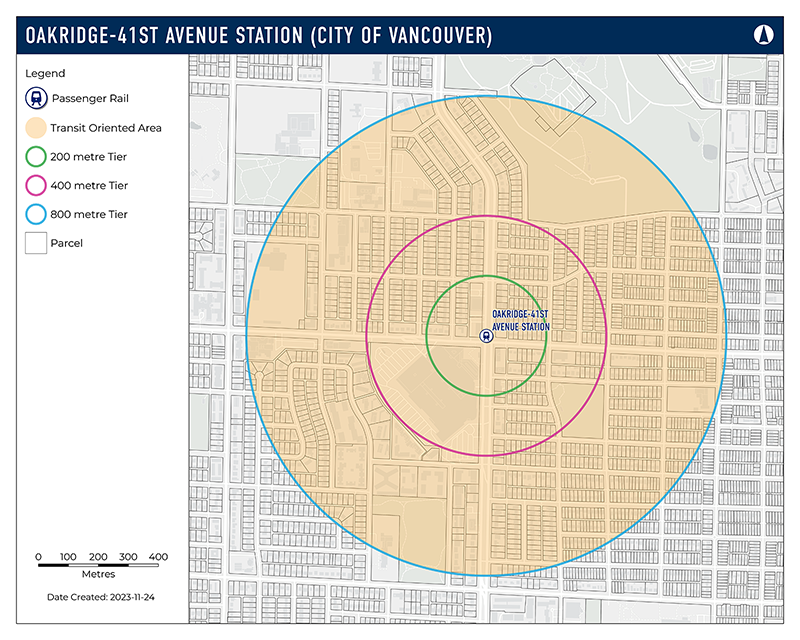
Latitude by Transca Developments - W 49th Ave. & Cambie - Langara, Vancouver West

Minimum Allowable Density for TOD Areas
Proximity to Sky Train/Canada Line Station
- 200m or less / Up to 5.0 FSR / Up to 20 Storeys
- 200m - 400m / Up to 4.0 FSR / Up to 12 Storeys
- 400m - 800m / Up to 3.0 FSR / Up to 8 Storeys
Proximity to Bus Exchange or West Coast Express Station
- 200m or less / Up to 4.0 FSR / Up to 12 Storeys
- 200m - 400m / Up to 3.0 FSR / Up to 8 Storeys
TOD legislative framework
New legislation will require some municipalities to designate Transit-Oriented Development Areas (TOD Areas) near transit hubs. These TOD Areas are defined as areas within 800 metres of a rapid transit station (e.g., SkyTrain station) and 400 metres of a bus exchange and West Coast Express that the Province has listed in regulations.
In these areas, local governments are required to:
- Ensure that minimum levels of density, size, and dimension established by the Province in regulations are allowed in TOD Areas. These will vary by municipality and may vary within the TOD Area. Local governments can approve densities that exceed the provincial regulations at their discretion
- Remove restrictive parking minimums for off-street residential and allow parking volumes to be determined by market need and demand
- Consider guidance and details in the provincial policy manual when planning or amending zoning bylaws
 WESTSIDE
WESTSIDE